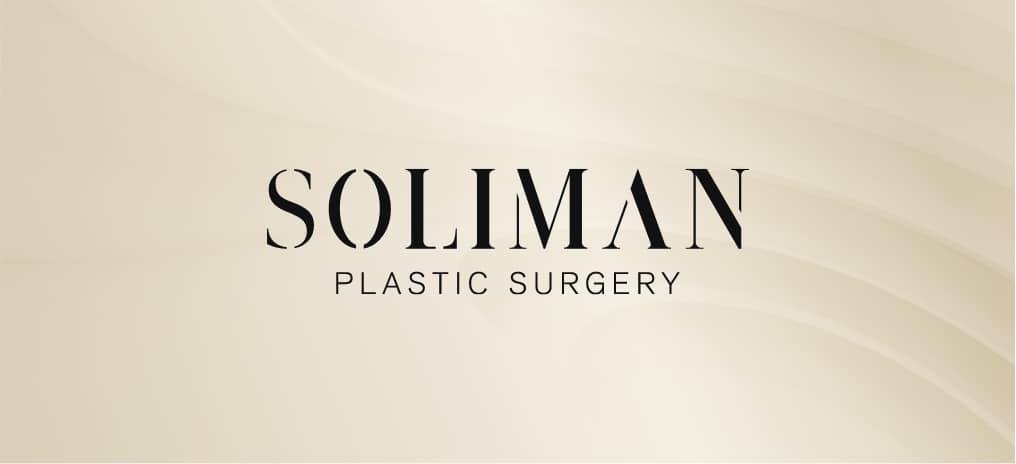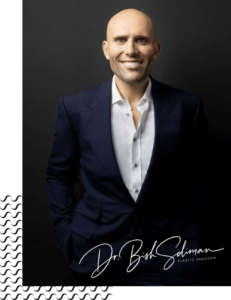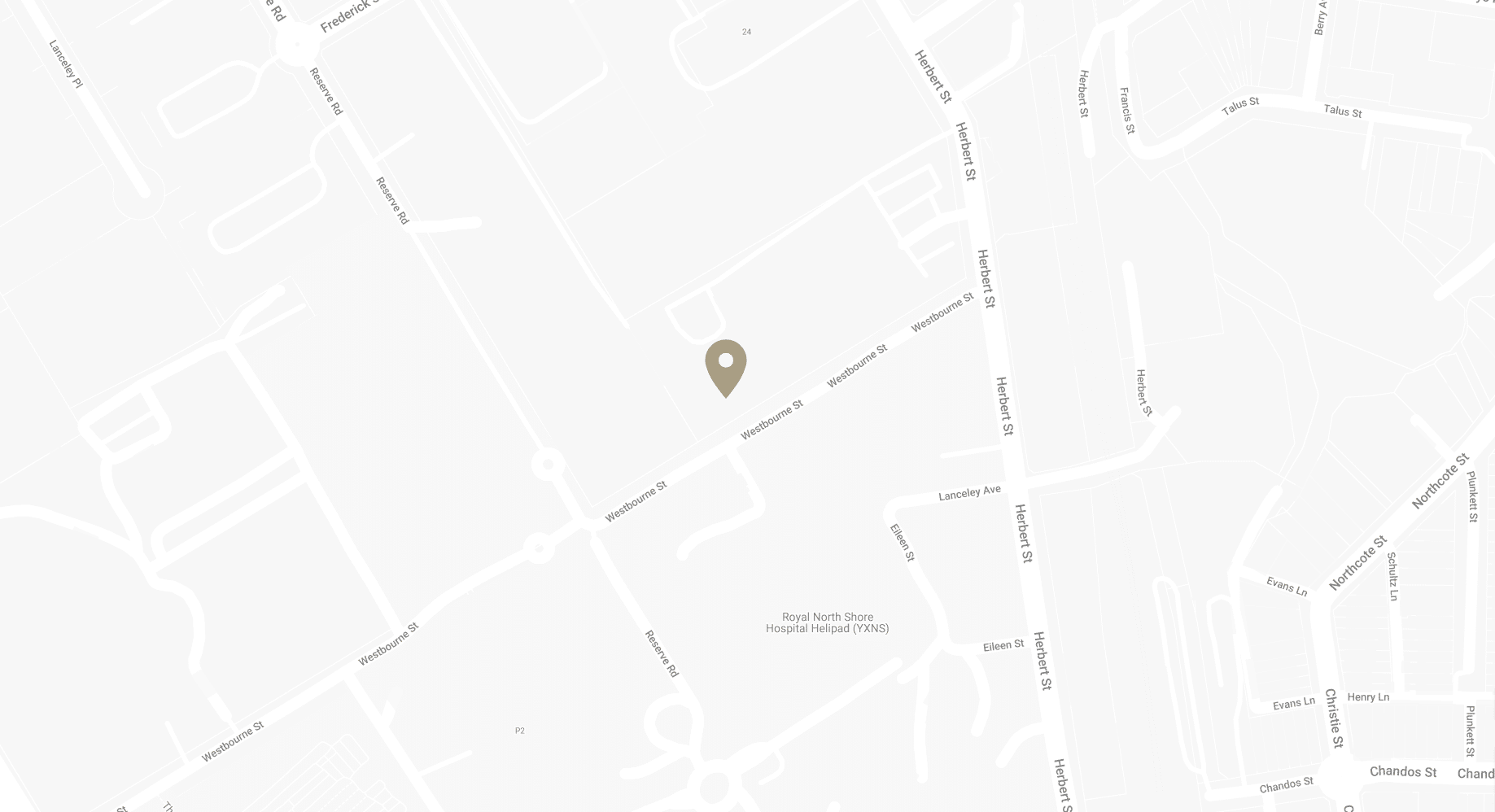How to Choose Between Round and Anatomical Breast Implant Shapes
Breast augmentation is a popular cosmetic procedure worldwide, allowing individuals to enhance or restore their breast appearance. One of the main considerations when it comes to breast augmentation is the shape of the implant, so Round vs Anatomical Breast Implants is a common question. This choice isn’t just about aesthetics; it also impacts the feel, appearance, and longevity of the results. There are two main types of breast implant shapes: round and teardrop or anatomical.
Dr Bish Soliman is an internationally trained Specialist Plastic Surgeon based in Sydney. He has garnered recognition for his expertise in plastic, reconstructive, and cosmetic procedures.
Download Dr Bish Soliman Cosmetic Breast Surgery Guide

Breast Implants Options
When it comes to choosing a breast implant, the decision between round vs anatomical implants is one of the most critical choices you’ll make.
- Round implants, as the name suggests, are circular in shape and can give a fuller, more voluminous look. They are a popular choice among women seeking a more dramatic transformation
- Anatomical implants, also known as teardrop implants, have a sloping contour and mimic the natural shape of the breast. These implants often provide a more subtle enhancement, ideal for those seeking a natural-looking augmentation
Differences between Round vs Anatomical Breast Implant Shapes
Every implant shape has unique advantages and potential challenges:
- Round implants are versatile, maintain their shape regardless of movement and might sometimes give a more augmented appearance
- Teardrop implants (also known as anatomical) offer a natural contour, but come with the risk of rotation
Round Implants
- Popularity: A top choice for many considering breast augmentation
- Suitable for various body types and breast shapes
- Uniform shape ensures a consistent look from all angles
- No concern about the implant rotating and causing an uneven appearance
- Provides pronounced fullness, especially in the upper breast region
- Potential Downsides: Might give a more obviously augmented appearance, depending on size and placement. Might not offer the natural downward slope some prefer, especially if too large for the body frame
Teardrop Implants (Anatomical Implants)
- Mimics the natural breast contour, fuller at the bottom and tapers towards the top
- Aligns with the natural breast shape
- Preferred by those seeking a subtle and anatomically aligned augmentation
- Available in various widths and projections
- Ensures alignment with individual anatomy
- Reduced upper fullness for a natural silhouette
- Often have a textured surface to reduce the risk of complications like capsular contracture
- Higher risk of rotation, which can distort the breast’s appearance
- Requires precise placement during surgery
- Textured surface might lead to a higher chance of rippling, especially in those with thin skin or minimal breast tissue
Potential Risks of Round vs Anatomical Implants
Every surgical procedure, including breast augmentation, comes with its set of potential risks and considerations. Here’s what you should know:
Round Implants
- Visibility: Depending on their placement and size, the edges of round implants might sometimes be more visible
- Appearance: They can offer a fuller look, but in some cases, they might appear less natural than teardrop implants, especially if they’re too large for the body frame
Teardrop Implants (Anatomical)
- Rotation: A significant consideration is the risk of rotation. If a teardrop implant rotates after surgery, it could distort the breast’s appearance
- Texture: To mitigate the risk of rotation, teardrop implants often have a textured surface. However, this comes with its considerations, like a potential link to certain types of lymphoma, although rare
What’s Best for You? Round vs Anatomical Breast Implants
When deciding which option is right for you, consider these aspects:
Personal Goals
Your aesthetic vision plays a pivotal role in determining the implant shape.
- Rounded Appearance: If you’re leaning towards a fuller, more voluptuous look, especially in the upper breast region, round implants are typically favoured. They provide a symmetrical fullness throughout the breast
- Natural Gradient: For those seeking a silhouette that mimics the natural slope of the breast, with more fullness at the bottom and tapering towards the top, anatomical (teardrop) implants are the go-to choice
Body Anatomy
Your unique anatomy can influence which implant shape complements you best.
- Body Type & Existing Breast Tissue: Round implants can be versatile, suiting a variety of body types. For those with minimal natural breast tissue, anatomical implants might offer a more natural-looking enhancement due to their tapered design
- Chest Width: While both implant types come in various widths, the choice might be influenced by the desired final look. A broader chest might accommodate wider implants, but the decision between round and anatomical will still hinge on the preferred breast contour
Lifestyle
Your daily activities can impact your implant choice.
- Physical Activity: Round implants, due to their symmetrical nature, maintain their appearance regardless of movement, making them a potential choice for highly active individuals. Anatomical implants, while offering a natural contour, come with the risk of rotation, which might be a consideration for those frequently engaged in rigorous activities
Other Factors to Consider When Choosing Breast Implants
Breast augmentation is a multifaceted decision, and while the shape of the implant—whether round or anatomical—is a significant consideration, several other factors play a crucial role in achieving the desired outcome.
Material: The choice of implant material is fundamental. Implants can be made of either silicone or saline. Silicone implants are known for their soft and natural feel, closely resembling natural breast tissue. They require regular check-ups to ensure they remain intact. On the other hand, saline implants are filled with sterile salt water. They can be adjusted more easily in terms of volume during surgery and require smaller incisions. However, they might not feel as natural as silicone.
Texture: The texture of the implant can influence its position and interaction with the surrounding tissue. Smooth implants have a soft surface, allowing them to move freely within the breast pocket, leading to a more natural movement. In contrast, textured implants are designed to adhere to the surrounding tissue, reducing the risk of movement and rotation. This adherence is especially beneficial for teardrop implants, as it prevents them from rotating and distorting the breast’s appearance.
Profile: The profile of an implant refers to its forward projection. A low profile implant is broader and flatter, suitable for those with a wider chest frame. A moderate profile offers a balanced projection and width, making it a popular choice for many. Meanwhile, a high profile implant provides significant forward volume, ideal for those with a narrower chest frame.
Placement: The position of the implant can significantly impact the final appearance. Implants can be placed subglandularly (over the muscle) or submuscularly (under the muscle). Subglandular placement positions the implant between the breast tissue and the chest muscle, which might lead to a quicker recovery but a higher chance of visible implant rippling. Submuscular placement, where the implant is beneath the pectoral muscle, offers a more natural appearance, especially for those with thin skin, but might involve a slightly longer recovery.
Size: One of the most critical decisions in breast augmentation is choosing the right implant size. It’s essential to select a size that complements your body’s proportions. While it might be tempting to opt for a significant size increase, it’s vital to consider factors like comfort, balance, and the potential need for future adjustments.
FAQs about Round vs Anatomical Breast Implants
How long do breast implants last? Does the shape affect longevity?
- Breast implants typically last 10-20 years, but this can vary. The implant shape does not directly affect the longevity, but each shape is associated with potential risks that can lead to the need for revision surgery.
How do the materials differ between round and anatomical implants, and are there specific benefits linked to each material?
- Both round and anatomical implants can be made of saline or silicone. Saline implants are filled with sterile salt water, while silicone implants contain a soft, elastic gel. Silicone tends to feel more like natural breast tissue, whereas saline implants might be firmer. One advantage of saline implants is that they can be adjusted more easily during surgery, as they are filled after being inserted. In case of a rupture, the saline is safely absorbed by the body. Silicone implants, on the other hand, offer a more natural feel and are less likely to wrinkle or ripple.
What are the considerations regarding implant placement, and how does the choice of implant shape factor into this?
- Implant placement can be either submuscular (under the chest muscle) or subglandular (over the chest muscle but under the breast tissue). Submuscular placement may result in a more natural appearance and reduced risk of complications, but it might involve a longer recovery period. While the placement often depends on individual anatomy, surgeon’s preference, and desired outcome, round implants can be more forgiving in terms of placement due to their symmetrical shape. Anatomical implants, because of their specific shape, require precise positioning to ensure the desired natural gradient.
Is the recovery process different depending on the implant shape chosen?
- Generally, the recovery process hinges more on factors like surgical technique, individual healing rates, and implant placement rather than solely on implant shape. However, with anatomical implants, there might be a bit more emphasis on ensuring the implant doesn’t rotate post-surgery, so certain post-operative instructions or supportive garments might be recommended.
Further Reading about Breast Surgery with Dr Bish Soliman
- Read Dr Soliman’s Breast Augmentation Surgery Page
- Read Dr Soliman’s Breast Implant Removal Surgery Page
- Read Dr Soliman’s Breast Reduction Surgery Page
- Read Dr Soliman’s Breast Lift (Mastopexy) Surgery Page
- Read Dr Soliman’s Blog about Scars after Breast Reduction for Best Results
- Read Dr Soliman’s Blog about Perfect Breasts – The Pursuit of Aesthetic Excellence
- Read Dr Soliman’s Blog about Treating Capsular Contracture – a Breast Implant Complication
- Read Dr Soliman’s Blog about 10 Questions you must ask your Surgeon before a Breast Augmentation
- Read more about Are My Breast Implants Ruptured?
Medical References about Breast Implant Shapes
- What to Know Before You Change Your Breast Size – WebMD
- Round or ‘Shaped’ Breast Implants – American Society of Plastic Surgeons
- What You Need to Know About Breast Augmentation – Medical News Today
- Breast Implants – Cleveland Clinic
- Round versus Anatomical Implants – NCBI



